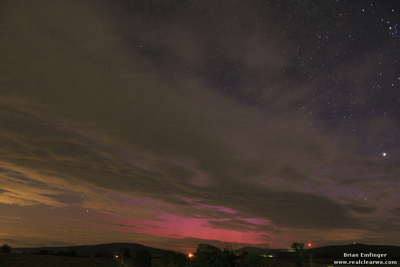This July, NASA's High Resolution Coronal Imager captured what the space agency is calling the highest-resolution images ever taken of the sun's corona in the extreme ultraviolet wavelength. Image via NASA
A stream of solar wind is apparently heading towards Earth, and is set to arrive between 28-30 July, according to NASA. Apparently the solar wind could spark off solar storms and result in auroras.
According to NASA’s Spaceweather.com, the stream of solar wind that’s heading our way may result in geomagnetic storms. If such storms happen, it means that sky watchers in high latitudes could be in for some aurora sightings over the coming nights.
But what exactly is the solar wind? Solar wind comes from the sun’s hot corona. Because the temperature of the corona is so high, the sun’s gravity cannot hold onto it, according to NASA. This means that the solar wind streams off of the sun in all directions at speeds of about 1.6m kilometres per hour.
In addition, solar wind often changes speed. The space agency says this means high- and low-speed streams interact with each other and alternately pass by the Earth as the sun rotates.
The wind speed variations batter the Earth’s magnetic field and can spark off geomagnetic storms.
Solar wind data
Solar wind data is sourced from real-time information sent to Earth from the ACE spacecraft and reported by the Space Weather Prediction Center (NOAA).
The ACE spacecraft itself is situated at such a point between the Earth and the sun to allow it to give about a one-hour advance warning of impending geomagnetic activity.
According to NASA’s Dr Tony Philips, who writes for Spaceweather.com, astronomers spanning the globe have also been monitoring a “magnificent prominence” – a magnetic filament filled with hot plasma – that has been arcing over the sun’s western surface for the past few days.
As for the sun’s corona, a telescope that was launched aboard a NASA sounding rocket on 11 July has seemingly captured the highest-resolution images ever taken of the sun’s million-degree atmosphere.
“We have an exceptional instrument and launched at the right time,” said Jonathan Cirtain, senior heliophysicist at NASA’s Marshall Space Flight Center in Huntsville, Alabama.
“Because of the intense solar activity we’re seeing right now, we were able to clearly focus on a sizable, active sunspot and achieve our imaging goals.”

Aurora over Arkansas, taken in July. Image by Brad Emfinger
The sun’s solar maximum, the peak of the sun’s 11-year sunspot cycle, is expected to happen in early 2013. When it does happen, the solar maximum is expected to spark off heightened solar flares, coronal mass ejections (CME) and geomagnetic storms.
Already, on the weekend of 14 July, a coronal mass ejection (CME) crashed into the Earth’s magnetic field, triggering a display of Northern Lights that were witnessed by sky watchers in places from North America, the Canadian border, Tasmania, New Zealand and the South Pole.
Sky watchers, it seems, might also be in for some aurorae treats in the coming nights!